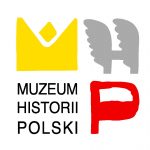 The Museum of Polish History in Warsaw (MHP) presents the most important themes of Polish state and nation history with particular emphasis on parliamentary traditions, institutions, and civic movements, the fight for freedom and independence. The Museum is active in shaping the international image of Poland, presenting Polish history and culture to foreign audiences in an interesting and approachable way.
The Museum of Polish History in Warsaw (MHP) presents the most important themes of Polish state and nation history with particular emphasis on parliamentary traditions, institutions, and civic movements, the fight for freedom and independence. The Museum is active in shaping the international image of Poland, presenting Polish history and culture to foreign audiences in an interesting and approachable way.
It participates in international dialogue, with particular emphasis on neighbouring countries. The institution carries out its mission in an open manner, promoting the widest possible access to cultural heritage and scientific resources in order to use its digital potential. MHP is the organizer of the Historical Event of the Year plebiscite, the aim of which is to honor the organizers, creators, and initiators of the most interesting historical undertakings.
 The National Museum in Warsaw collects, preserves, and offers access to Polish and foreign cultural goods in the field of art history, archaeology, history, numismatics. The MNW organises exhibitions and study visits connected; the latter connected to scientific research and preparation of exhibitions with foreign partners. In terms of loans, exhibition organisation, publications and scientific projects, the Museum has cooperated with other institutions, galleries and scientific institutes in Poland and abroad. It has been cooperating on a permanent basis with ICOM and CODART – a world organisation of custodians and curators of Dutch, Flemish and Belgian art, based in Amsterdam. An example of international activity was the exhibition “Poland. The power of images.” together with Louvre-Lens Museum.
The National Museum in Warsaw collects, preserves, and offers access to Polish and foreign cultural goods in the field of art history, archaeology, history, numismatics. The MNW organises exhibitions and study visits connected; the latter connected to scientific research and preparation of exhibitions with foreign partners. In terms of loans, exhibition organisation, publications and scientific projects, the Museum has cooperated with other institutions, galleries and scientific institutes in Poland and abroad. It has been cooperating on a permanent basis with ICOM and CODART – a world organisation of custodians and curators of Dutch, Flemish and Belgian art, based in Amsterdam. An example of international activity was the exhibition “Poland. The power of images.” together with Louvre-Lens Museum.
 The National Museum in Kraków (MNK) is the oldest museum in Poland. It carries out its mission of by popularising national and human values manifested in global and Polish art, with particular focus on the cultural heritage of Kraków region. The Museum is involved in digitisation, educational and scientific-research projects. It was the first museum in Poland to obtain the status of a scientific unit in the group of art sciences and artistic creation. One of the institution’s international initiatives is the project Culture Beyond Borders, under which the Academy of Management of a Cultural Institution programme has been implemented. Within its framework a platform allowing an exchange of good practices between Polish and Georgian cultural institutions was launched. It aims at sharing knowledge on the standards and solutions in the strategic areas of museum activity, management and protection as well as dissemination of cultural heritage.
The National Museum in Kraków (MNK) is the oldest museum in Poland. It carries out its mission of by popularising national and human values manifested in global and Polish art, with particular focus on the cultural heritage of Kraków region. The Museum is involved in digitisation, educational and scientific-research projects. It was the first museum in Poland to obtain the status of a scientific unit in the group of art sciences and artistic creation. One of the institution’s international initiatives is the project Culture Beyond Borders, under which the Academy of Management of a Cultural Institution programme has been implemented. Within its framework a platform allowing an exchange of good practices between Polish and Georgian cultural institutions was launched. It aims at sharing knowledge on the standards and solutions in the strategic areas of museum activity, management and protection as well as dissemination of cultural heritage.
 The National Museum in Kielce (MNKi)
The National Museum in Kielce (MNKi)
carries out its mission by, among other things, taking care of the entrusted cultural heritage through unique and attractive exhibition program, artistic activities, education, scientific research and publishing activities. The Museum has one of the most extensive collections of old Polish portraits, the largest collection of Szermentowski‘s paintings and ceramics in Poland and a unique gramophone record with Żeromski’s voice. The institution became the organiser of the first interdisciplinary conference in Poland devoted to the subject of museum as therapy. An example of international cooperation is the board exhibition devoted to the Nobel Prize winner prepared as part of the celebrations of the Year of Sienkiewicz.
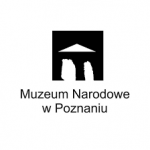 The National Museum in Poznan (MNP) collects and preserves the cultural heritage of different eras and generations, knowledge, hardship and passion. It promotes main values of history, science and culture, shaping cognitive and aesthetic sensitivity. The institution co-organizes exhibitions in Poland and abroad. The Museum awards the Jan Lenica Prize to outstanding graphic artists from all over the world, with a fully-fledged artistic personality, representing a similar attitude to that of Lenica, i.e. exceeding the narrowly understood framework of the profession of utility graphic designer.
The National Museum in Poznan (MNP) collects and preserves the cultural heritage of different eras and generations, knowledge, hardship and passion. It promotes main values of history, science and culture, shaping cognitive and aesthetic sensitivity. The institution co-organizes exhibitions in Poland and abroad. The Museum awards the Jan Lenica Prize to outstanding graphic artists from all over the world, with a fully-fledged artistic personality, representing a similar attitude to that of Lenica, i.e. exceeding the narrowly understood framework of the profession of utility graphic designer.
 The National Museum in Wrocław (MNWr) collects historical objects as well as iconographic, photographic and documentary materials concerning Silesian art, Polish art and the former South-Eastern borderlands, European art, but also the Middle and the Far East artistic crafts, technical culture and ethnography. The institution owns one of the largest collections of Polish contemporary art in the country, whose history dates back to the 1960s. The exhibits cover all artistic disciplines, from painting, graphics, drawing, sculpture, glass, ceramics and photography to conceptual projects, happening documentation and video art. The institution co-organised the international “Ganymed goes Europe” project, which combines three art disciplines: painting, literature and theatre.
The National Museum in Wrocław (MNWr) collects historical objects as well as iconographic, photographic and documentary materials concerning Silesian art, Polish art and the former South-Eastern borderlands, European art, but also the Middle and the Far East artistic crafts, technical culture and ethnography. The institution owns one of the largest collections of Polish contemporary art in the country, whose history dates back to the 1960s. The exhibits cover all artistic disciplines, from painting, graphics, drawing, sculpture, glass, ceramics and photography to conceptual projects, happening documentation and video art. The institution co-organised the international “Ganymed goes Europe” project, which combines three art disciplines: painting, literature and theatre.
 The National Museum in Gdańsk (MNG) collects artefacts, iconographic, photographic and documentary materials concerning old, contemporary and modern Polish and foreign art, ethnography of Pomerania and European and non-European cultures. The gem of the museum’s collection is the “Last Judgment”, a masterpiece of the Dutch Renaissance painted by Hans Memling. The institution takes an active part in international research, conservation, digitisation and educational projects. As part of international cooperation, workshops for artists in Baghdad and a project of photographic documentation of Norwegian and Icelandic churches were organised.
The National Museum in Gdańsk (MNG) collects artefacts, iconographic, photographic and documentary materials concerning old, contemporary and modern Polish and foreign art, ethnography of Pomerania and European and non-European cultures. The gem of the museum’s collection is the “Last Judgment”, a masterpiece of the Dutch Renaissance painted by Hans Memling. The institution takes an active part in international research, conservation, digitisation and educational projects. As part of international cooperation, workshops for artists in Baghdad and a project of photographic documentation of Norwegian and Icelandic churches were organised.
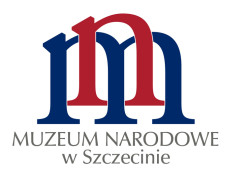 The National Museum in Szczecin (MNS) carries out its mission by presenting its collections as part of permanent exhibitions programme, organising temporary exhibitions and various artistic events, scientific conferences, popular science meetings, as well as educational and publishing activities. MNS as an institution of public trust, it is a depositary of collective memory, but also a living cultural centre – a place that actively participates in the process of shaping historical awareness and social attitudes. In the spirit of multicultural, cross-border dialogue and cooperation, the museum builds the regional, national and European identity of West Pomerania and its inhabitants, as exemplified by the international project „Common Heritage, Common Future”.
The National Museum in Szczecin (MNS) carries out its mission by presenting its collections as part of permanent exhibitions programme, organising temporary exhibitions and various artistic events, scientific conferences, popular science meetings, as well as educational and publishing activities. MNS as an institution of public trust, it is a depositary of collective memory, but also a living cultural centre – a place that actively participates in the process of shaping historical awareness and social attitudes. In the spirit of multicultural, cross-border dialogue and cooperation, the museum builds the regional, national and European identity of West Pomerania and its inhabitants, as exemplified by the international project „Common Heritage, Common Future”.
 The Cracow Saltworks Museum in Wieliczka focuses on the protection and popularisation of the rich history of salt mining in Poland, understood as a permanent heritage of humanity. The museum carries out its tasks by collecting, storing, conserving and making available cultural assets in the area of the history of the former brewing and salt mining and the towns of Wieliczka and Bochnia, mining technology, the geology of salt deposits, art and ethnography. The institution also manages, apart from the permanent underground exhibition, the medieval Saltworks Castle – the historical seat of the mine management. The Wieliczka Salt Mine was inscribed on the UNESCO World Cultural and Natural Heritage List. It conducts a thriving educational, research and exhibition activity.
The Cracow Saltworks Museum in Wieliczka focuses on the protection and popularisation of the rich history of salt mining in Poland, understood as a permanent heritage of humanity. The museum carries out its tasks by collecting, storing, conserving and making available cultural assets in the area of the history of the former brewing and salt mining and the towns of Wieliczka and Bochnia, mining technology, the geology of salt deposits, art and ethnography. The institution also manages, apart from the permanent underground exhibition, the medieval Saltworks Castle – the historical seat of the mine management. The Wieliczka Salt Mine was inscribed on the UNESCO World Cultural and Natural Heritage List. It conducts a thriving educational, research and exhibition activity.
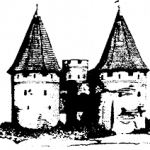 The Malbork Castle Museum has the task of preserving the historical substance of the Malbork castle complex, an important element of cultural heritage and its subordinate castles in Kwidzyn and Sztum. The most valuable collections of the Castle Museum include collections of artistic amber products, medieval architectural details and sculpture, and old weapons and armaments. Malbork Castle is inscribed on the UNESCO World Cultural and Natural Heritage List. The museum is a member of the Association of Baltic Castles and Museums. The institution carries out international educational projects for young people and participates in international cooperation programmes, e.g. in the interdisciplinary research programme Ecology of the Crusades.
The Malbork Castle Museum has the task of preserving the historical substance of the Malbork castle complex, an important element of cultural heritage and its subordinate castles in Kwidzyn and Sztum. The most valuable collections of the Castle Museum include collections of artistic amber products, medieval architectural details and sculpture, and old weapons and armaments. Malbork Castle is inscribed on the UNESCO World Cultural and Natural Heritage List. The museum is a member of the Association of Baltic Castles and Museums. The institution carries out international educational projects for young people and participates in international cooperation programmes, e.g. in the interdisciplinary research programme Ecology of the Crusades.
 The Castle Museum in Łańcut is one of the most beautiful aristocratic residences in Poland. It is famous for its excellent residential interiors and an interesting collection of horse-drawn vehicles. The palace complex is surrounded by an old, picturesque English-style park with numerous pavilions and farm buildings, once closely related to the everyday life of the Łańcut residence. The Museum carries out a number of projects related to research, digital inventory, protection and popularisation of endangered national cultural assets in the country and abroad, including cooperation with museum and scientific institutions in Ukraine. Moreover, the famous Music Festival in Łańcut takes place annually in the spaces of the Castle and the park, with the participation of outstanding artists from all over the world.
The Castle Museum in Łańcut is one of the most beautiful aristocratic residences in Poland. It is famous for its excellent residential interiors and an interesting collection of horse-drawn vehicles. The palace complex is surrounded by an old, picturesque English-style park with numerous pavilions and farm buildings, once closely related to the everyday life of the Łańcut residence. The Museum carries out a number of projects related to research, digital inventory, protection and popularisation of endangered national cultural assets in the country and abroad, including cooperation with museum and scientific institutions in Ukraine. Moreover, the famous Music Festival in Łańcut takes place annually in the spaces of the Castle and the park, with the participation of outstanding artists from all over the world.
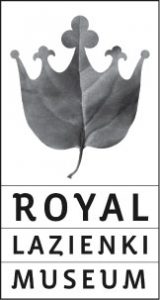 The Royal Łazienki Museum in Warsaw is formed by classical monuments and old gardens. The main task of the Museum is to present Polish history and culture, in the broader global context. It popularizes knowledge about the history of the Royal Łazienki Park, in particular, the art collection of King Stanislaw August. The institution is the organiser of the International Gardens of Light project, which aims to promote unique historical gardens and museums from all over the world. In addition, it carries out projects in cooperation with international partners in the space of the park and historical gardens. It runs a long-term exhibition project called The Exhibition of One Picture, which allows for the presentation of outstanding works from world collections.
The Royal Łazienki Museum in Warsaw is formed by classical monuments and old gardens. The main task of the Museum is to present Polish history and culture, in the broader global context. It popularizes knowledge about the history of the Royal Łazienki Park, in particular, the art collection of King Stanislaw August. The institution is the organiser of the International Gardens of Light project, which aims to promote unique historical gardens and museums from all over the world. In addition, it carries out projects in cooperation with international partners in the space of the park and historical gardens. It runs a long-term exhibition project called The Exhibition of One Picture, which allows for the presentation of outstanding works from world collections.
 The Museum of King John III’s Palace in Wilanów takes care of the testimonies of the memory of King John III Sobieski and Stanisław Kostka Potocki. The museum disseminates knowledge about the times of both patrons and cultivates the values of old Polish tradition. It promotes civic attitudes and patriotic responsibility for the national cultural and natural heritage. In cooperation with ICOM, it actively participates in the creation of cultural heritage safety procedures and promotes environmental responsibility of cultural institutions. The Museum supports cultural diplomacy by organising exhibitions and seminars devoted to the history and culture of Old Polish, publishing scientific and popular science books in foreign languages, as well as through a programme of historical reconstructions, including culinary, which is implemented by Polish diplomatic and cultural institutions abroad.
The Museum of King John III’s Palace in Wilanów takes care of the testimonies of the memory of King John III Sobieski and Stanisław Kostka Potocki. The museum disseminates knowledge about the times of both patrons and cultivates the values of old Polish tradition. It promotes civic attitudes and patriotic responsibility for the national cultural and natural heritage. In cooperation with ICOM, it actively participates in the creation of cultural heritage safety procedures and promotes environmental responsibility of cultural institutions. The Museum supports cultural diplomacy by organising exhibitions and seminars devoted to the history and culture of Old Polish, publishing scientific and popular science books in foreign languages, as well as through a programme of historical reconstructions, including culinary, which is implemented by Polish diplomatic and cultural institutions abroad.
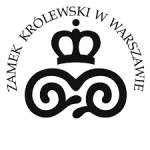 The Royal Castle in Warsaw is the former residence of kings and the seat of the Sejm of the Republic of Both Nations. It gathers one of the most valuable collections of artworks in Poland, with paintings by Rembrandt, Canaletta, Bacciarelli and Matejko. The richly decorated interiors take visitors to the times of the Jagiellons, Vasa, Saxons and King Stanislaw August. The institution carries out international museum projects. It organizes study visits and lectures combined with the “At the Royal Table” event – tasting historical dishes.
The Royal Castle in Warsaw is the former residence of kings and the seat of the Sejm of the Republic of Both Nations. It gathers one of the most valuable collections of artworks in Poland, with paintings by Rembrandt, Canaletta, Bacciarelli and Matejko. The richly decorated interiors take visitors to the times of the Jagiellons, Vasa, Saxons and King Stanislaw August. The institution carries out international museum projects. It organizes study visits and lectures combined with the “At the Royal Table” event – tasting historical dishes.
 The Wawel Royal Castle, located in Krakow, the former capital of Poland, is a centuries-old seat of kings and a symbol of Polish statehood. It owns a valuable collection of paintings, graphics, sculptures, fabrics, goldsmiths’ products, militaria, porcelain and furniture. The chambers exhibit tapestries from the collection of King Sigismund August as well as magnificent Renaissance Italian paintings from the Lanckoroński collection. The museum offers access to the collections through several permanent castle exhibitions and open-air expositions. The castle has a thriving exhibition, educational and conservation activity. Within the framework of a long-term international programme, the institution is engaged in research and reconstruction of the common cultural heritage of the eastern borderlands of the former Polish Republic.
The Wawel Royal Castle, located in Krakow, the former capital of Poland, is a centuries-old seat of kings and a symbol of Polish statehood. It owns a valuable collection of paintings, graphics, sculptures, fabrics, goldsmiths’ products, militaria, porcelain and furniture. The chambers exhibit tapestries from the collection of King Sigismund August as well as magnificent Renaissance Italian paintings from the Lanckoroński collection. The museum offers access to the collections through several permanent castle exhibitions and open-air expositions. The castle has a thriving exhibition, educational and conservation activity. Within the framework of a long-term international programme, the institution is engaged in research and reconstruction of the common cultural heritage of the eastern borderlands of the former Polish Republic.
 The National Museum of Technology in Warsaw (NMT) is the largest technical museum in Poland. The aim of the NMT is to preserve for future generations material testimonies of the development of Polish technology, reaching back to the beginnings of the Polish state. The institution strives to reliably and impartially describe the events accompanying technical progress and to present the contemporary achievements and paths of transformation of Polish technical thought. Among valuable exhibits, photographic documentation and construction plans of many machines and devices one can find the Enigma cipher machine and Marshal Józef Piłsudski’s Cadillac. The Museum is the organiser of the workshop “Encounters with the history of technology”.
The National Museum of Technology in Warsaw (NMT) is the largest technical museum in Poland. The aim of the NMT is to preserve for future generations material testimonies of the development of Polish technology, reaching back to the beginnings of the Polish state. The institution strives to reliably and impartially describe the events accompanying technical progress and to present the contemporary achievements and paths of transformation of Polish technical thought. Among valuable exhibits, photographic documentation and construction plans of many machines and devices one can find the Enigma cipher machine and Marshal Józef Piłsudski’s Cadillac. The Museum is the organiser of the workshop “Encounters with the history of technology”.
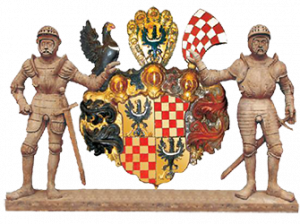 The Museum of the Silesian Piasts in Brzeg focuses on the history of the Silesian Piasts and their traditions in the historical area of the Silesian Land. It collects objects related to the past of the city and the Brest Land and conducts exhibitions. It also organizes educational and workshop activities addressed to children, youth and seniors. The workshops address questions related to the history of the city, the Piasts of Silesia, historical sources, interpretation of the works of Gothic, Renaissance, and Baroque art, and allow to get to know the museum collection more in depth.
The Museum of the Silesian Piasts in Brzeg focuses on the history of the Silesian Piasts and their traditions in the historical area of the Silesian Land. It collects objects related to the past of the city and the Brest Land and conducts exhibitions. It also organizes educational and workshop activities addressed to children, youth and seniors. The workshops address questions related to the history of the city, the Piasts of Silesia, historical sources, interpretation of the works of Gothic, Renaissance, and Baroque art, and allow to get to know the museum collection more in depth.
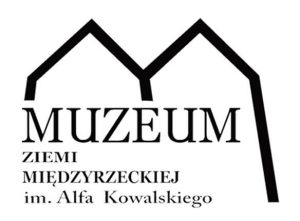 The Alf Kowalski Museum of Międzyrzecz Land presents Poland’s largest collection of coffin portraits, inscription and coat-of-arms boards from the 17th and 18th centuries. The main task of the institution is to collect and study monuments and documentary materials related to technology, art and archaeology of the Międzyrzecz Land and the former Wielkopolska-Brandenburg-Silesia borderland and its characteristic old Polish funeral rite. The Museum is the organiser of international workshops within the “Comenius” project devoted to multi-culturalism of the Wielkopolska region.
The Alf Kowalski Museum of Międzyrzecz Land presents Poland’s largest collection of coffin portraits, inscription and coat-of-arms boards from the 17th and 18th centuries. The main task of the institution is to collect and study monuments and documentary materials related to technology, art and archaeology of the Międzyrzecz Land and the former Wielkopolska-Brandenburg-Silesia borderland and its characteristic old Polish funeral rite. The Museum is the organiser of international workshops within the “Comenius” project devoted to multi-culturalism of the Wielkopolska region.
 The National Maritime Museum in Gdansk (NMM) collects, preserves, digitises and disseminates knowledge about Polish maritime history. It conducts scientific activities in the field of marine archaeology, conservation, digital documentation and reconstruction of monuments. The NMM participates in the works of the Baltic Region Heritage Committee. The institution actively cooperates with maritime museums of other Baltic states. It implements international projects – “Baltic Sea Region Integrated Maritime Cultural Heritage Management” (BALCTICRIM) focusing on the Baltic Sea spatial development plan or Navis I and Navis II aimed at developing a database on the monuments of former boatbuilding and early-medieval ports.
The National Maritime Museum in Gdansk (NMM) collects, preserves, digitises and disseminates knowledge about Polish maritime history. It conducts scientific activities in the field of marine archaeology, conservation, digital documentation and reconstruction of monuments. The NMM participates in the works of the Baltic Region Heritage Committee. The institution actively cooperates with maritime museums of other Baltic states. It implements international projects – “Baltic Sea Region Integrated Maritime Cultural Heritage Management” (BALCTICRIM) focusing on the Baltic Sea spatial development plan or Navis I and Navis II aimed at developing a database on the monuments of former boatbuilding and early-medieval ports.
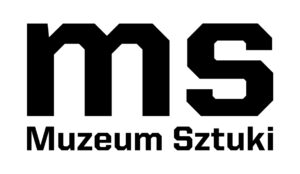 The Museum of Art in Lodz (MSL) focuses on presenting in various contexts the works of art gathered in the collection, as well as promoting progressive artistic phenomena and strengthening the role of art as an important element of social life. The main mission of the institution is realized through the collection, conservation and development of the exhibits, as well as through the realization of artistic undertakings and widely understood scientific, educational and popularization activities. Due to the close link between the history of the Museum and the history of the avant-garde, its activities place special emphasis on the promotion of progressive artistic phenomena and cooperation with their creators.
As part of international cooperation, it has carried out the Creative Archives: Lodz – London project aimed at engaging in a discourse on modern methods of making archives available and sharing good practices in the field of archiving and digitising artefacts accompanying art creation.
The Museum of Art in Lodz (MSL) focuses on presenting in various contexts the works of art gathered in the collection, as well as promoting progressive artistic phenomena and strengthening the role of art as an important element of social life. The main mission of the institution is realized through the collection, conservation and development of the exhibits, as well as through the realization of artistic undertakings and widely understood scientific, educational and popularization activities. Due to the close link between the history of the Museum and the history of the avant-garde, its activities place special emphasis on the promotion of progressive artistic phenomena and cooperation with their creators.
As part of international cooperation, it has carried out the Creative Archives: Lodz – London project aimed at engaging in a discourse on modern methods of making archives available and sharing good practices in the field of archiving and digitising artefacts accompanying art creation.
 The Museum of Modern Art in Warsaw conducts research on the latest art and collects a collection of works of art. The contemporary art collection built by the Museum is a record of dynamic phenomena and processes taking place locally and globally. It creates a space for meetings, mutual inspiration and reflection, going beyond the area of art, but always finding its source there. The activity is based on the organisation of exhibitions, publications, educational and research programmes. The institution has been included among the members of L’Internationale – a federation of institutions dealing with modern and contemporary art. It cooperates with associated museums and other European institutions.
The Museum of Modern Art in Warsaw conducts research on the latest art and collects a collection of works of art. The contemporary art collection built by the Museum is a record of dynamic phenomena and processes taking place locally and globally. It creates a space for meetings, mutual inspiration and reflection, going beyond the area of art, but always finding its source there. The activity is based on the organisation of exhibitions, publications, educational and research programmes. The institution has been included among the members of L’Internationale – a federation of institutions dealing with modern and contemporary art. It cooperates with associated museums and other European institutions.
 Zachęta – National Gallery of Art is to promote knowledge about contemporary art as an important element of cultural and social life. The gallery organizes numerous temporary exhibitions. Its interiors, which are more than a hundred years old, showcase works of outstanding Polish and foreign artists, including Marlene Dumas, Zbigniew Libera, Tadeusz Kantor, Yayoi Kusama, Wilhelm Sasnal. The task of the Zachęta Gallery is to provide substantive support and organise exhibitions at the Polish Pavilion in Venice for the Art Biennale and the Architecture Biennale – one of the most important art festivals in the world. The Gallery also conducts educational activities aimed at children and young people as well as adults, publishes books on contemporary art, collects information on Polish artistic life after 1945.
Zachęta – National Gallery of Art is to promote knowledge about contemporary art as an important element of cultural and social life. The gallery organizes numerous temporary exhibitions. Its interiors, which are more than a hundred years old, showcase works of outstanding Polish and foreign artists, including Marlene Dumas, Zbigniew Libera, Tadeusz Kantor, Yayoi Kusama, Wilhelm Sasnal. The task of the Zachęta Gallery is to provide substantive support and organise exhibitions at the Polish Pavilion in Venice for the Art Biennale and the Architecture Biennale – one of the most important art festivals in the world. The Gallery also conducts educational activities aimed at children and young people as well as adults, publishes books on contemporary art, collects information on Polish artistic life after 1945.
 The Józef Piłsudski Museum in Sulejówek carries out its mission by showing the figure of the Marshal and promoting the values he professed – national pride, patriotic attitude, dedication to the country, respect for tradition. The institution created the Youth Council of the Józef Piłsudski Museum in Sulejówek – the first Polish advisory body of the museum consisting of young people, which enables it to meet the needs of young people in cultural institutions and allows young people to create their own projects based on the Museum’s resources. The institution organises the Dialogue of Two Cultures, an annual scientific conference held in Krzemieniec, Ukraine. On the occasion of the Marshal’s 150th birthday, the Museum has prepared the exhibition Husband of the State of Poland and Europe presented abroad.
The Józef Piłsudski Museum in Sulejówek carries out its mission by showing the figure of the Marshal and promoting the values he professed – national pride, patriotic attitude, dedication to the country, respect for tradition. The institution created the Youth Council of the Józef Piłsudski Museum in Sulejówek – the first Polish advisory body of the museum consisting of young people, which enables it to meet the needs of young people in cultural institutions and allows young people to create their own projects based on the Museum’s resources. The institution organises the Dialogue of Two Cultures, an annual scientific conference held in Krzemieniec, Ukraine. On the occasion of the Marshal’s 150th birthday, the Museum has prepared the exhibition Husband of the State of Poland and Europe presented abroad.

The main exhibition of the Museum of John Paul II and Primate Wyszyński is in the ring surrounding the dome of the Temple of Divine Providence. It is located at a height of 26 meters (eighth floor) and covers about 2,000 square meters. The exhibition tells the story of two patrons of the Museum – John Paul II and Primate Stefan Wyszyński – against the background of the century in which they lived. Its chronological framework covers the period from 1901 (the year of birth of Stefan Wyszyński) to 2005 (the death of John Paul II). The exhibition shows the influence of both heroes of the Museum on the fate of the Church and Poland as well as their contribution to preserving the faith and national and cultural identity of Poles and the overthrow of communism.
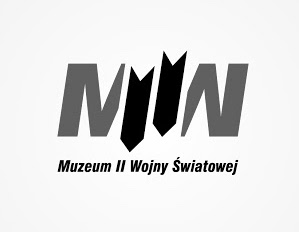 The Museum of the Second World War in Gdańsk collects and makes available collections concerning the history of the Second World War with particular emphasis on the place of its beginning on Polish soil. The Museum is involved in exhibition, popularisation, education and publishing activities. The aim of the institution is to shape the historical narrative, thanks to which World War II is presented in a modern way from the perspective of the experience of Poles and Poland, taking into account the great politics of the time, and above all people’s attitudes towards the wartime reality and the nightmare of the occupation of Poland by two totalitarian regimes. The Museum also deals with the wartime fates of other nations involved in this greatest military conflict of the 20th century. It runs international exhibition, educational and cultural projects, which include the Million from across the ocean exhibition, the World Battlefield Museums Forum international conference, and children and youth trips abroad Changing Perspectives.
The Museum of the Second World War in Gdańsk collects and makes available collections concerning the history of the Second World War with particular emphasis on the place of its beginning on Polish soil. The Museum is involved in exhibition, popularisation, education and publishing activities. The aim of the institution is to shape the historical narrative, thanks to which World War II is presented in a modern way from the perspective of the experience of Poles and Poland, taking into account the great politics of the time, and above all people’s attitudes towards the wartime reality and the nightmare of the occupation of Poland by two totalitarian regimes. The Museum also deals with the wartime fates of other nations involved in this greatest military conflict of the 20th century. It runs international exhibition, educational and cultural projects, which include the Million from across the ocean exhibition, the World Battlefield Museums Forum international conference, and children and youth trips abroad Changing Perspectives.
 The Ulma Family Museum of Poles Saving Jews during World War II in Markowa carries out its mission by showing the heroic attitudes of Poles who helped Jews during the German occupation, risking their own and their families’ lives. Moreover, it presents Polish-Jewish relations during the Holocaust and disseminates knowledge about the fate of the Ulma Family in Markowa.
It is the first museum in Poland to deal with the subject of saving the Jewish population in the occupied Polish territories during the Holocaust. The Museum organizes international study visits and creates mobile exhibitions devoted to the issue of Poles saving Jews during the Holocaust, the tragedy of the Holocaust and Polish-Jewish relations.
The Ulma Family Museum of Poles Saving Jews during World War II in Markowa carries out its mission by showing the heroic attitudes of Poles who helped Jews during the German occupation, risking their own and their families’ lives. Moreover, it presents Polish-Jewish relations during the Holocaust and disseminates knowledge about the fate of the Ulma Family in Markowa.
It is the first museum in Poland to deal with the subject of saving the Jewish population in the occupied Polish territories during the Holocaust. The Museum organizes international study visits and creates mobile exhibitions devoted to the issue of Poles saving Jews during the Holocaust, the tragedy of the Holocaust and Polish-Jewish relations.
 The State Museum Auschwitz-Birkenau in Oswiecim has the task of collecting the collections, which include the movable remains of Auschwitz and the associated archives, securing parts of the grounds of the former KL Auschwitz and disseminating the history of KL Auschwitz to future generations. The site of the former German Nazi concentration and extermination camp has been included on the UNESCO World Cultural and Natural Heritage List. The Museum has an International Centre for Education about Auschwitz and the Holocaust (MCEAH), which cooperates with many institutions from around the world. The institution carries out international, intercultural and interreligious projects related to education, commemoration, scientific research and archival searches. An example of the institution’s extensive activities is the International Summer Academy, in which teachers and educators from all over the world take part.
The State Museum Auschwitz-Birkenau in Oswiecim has the task of collecting the collections, which include the movable remains of Auschwitz and the associated archives, securing parts of the grounds of the former KL Auschwitz and disseminating the history of KL Auschwitz to future generations. The site of the former German Nazi concentration and extermination camp has been included on the UNESCO World Cultural and Natural Heritage List. The Museum has an International Centre for Education about Auschwitz and the Holocaust (MCEAH), which cooperates with many institutions from around the world. The institution carries out international, intercultural and interreligious projects related to education, commemoration, scientific research and archival searches. An example of the institution’s extensive activities is the International Summer Academy, in which teachers and educators from all over the world take part.
 The State Museum at Majdanek in Lublin is the only martyrological museum in the world created during the Second World War. It takes care of the material remains of three German crime scenes – the concentration camp at Majdanek and the death camps in Bełżec and Sobibór. In its activity, it puts special emphasis on developing in theory and practice historical education about the German occupation of the Lublin region. The educational activity of the Museum is based on active learning about and learning about history written in the real place. It includes the development of specialist meeting and workshop programmes, the organisation of historical workshops for young people, study stays for adults and the implementation of international educational and historical projects. An example of international activity is the cooperation of institutions with the Friederich von Bodelschwingh Bethel Schools in Bielefeld.
The State Museum at Majdanek in Lublin is the only martyrological museum in the world created during the Second World War. It takes care of the material remains of three German crime scenes – the concentration camp at Majdanek and the death camps in Bełżec and Sobibór. In its activity, it puts special emphasis on developing in theory and practice historical education about the German occupation of the Lublin region. The educational activity of the Museum is based on active learning about and learning about history written in the real place. It includes the development of specialist meeting and workshop programmes, the organisation of historical workshops for young people, study stays for adults and the implementation of international educational and historical projects. An example of international activity is the cooperation of institutions with the Friederich von Bodelschwingh Bethel Schools in Bielefeld.
The Stutthof Museum in Sztutowo is located on the site of the former German concentration camp KL Stutthof. Generations of Museum staff have become guardians of the memory of the crime and suffering of thousands of victims. In order to preserve and protect the cultural heritage, educational, promotional, exhibition, scientific and documentary activities are carried out. As part of the programme The fate of Poles in German concentration camps in Western Europe, the institution collects documents and other memorabilia related to the tragic fate of our fellow citizens in German concentration camps in Western Europe. The Museum is also the organiser of cyclical conferences and meetings of museum professionals from Poland and abroad – the Memorial Forum.
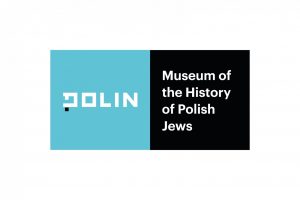 The Polin Museum of the History of Polish Jews is an institution which presents centuries-old history of Polish Jews. The main mission of the Museum is to restore and protect the memory of the history of Polish Jews, to serve the ideas of openness, tolerance and truth, contributing to mutual understanding and respect between Poles and Jews, societies of Europe and the world. The Museum conducts a vibrant exhibition and educational activity. In connection with its multi-directional cooperation with foreign countries, the institution has realised, among other things, the temporary exhibition “Risking your life”. Poles saving Jews during the Holocaust, which has been translated into ten languages. One of the MHPJ’s programmes is the Global Education Outreach Program (GEOP), which includes international scientific workshops, conferences, lectures and seminars.
The Polin Museum of the History of Polish Jews is an institution which presents centuries-old history of Polish Jews. The main mission of the Museum is to restore and protect the memory of the history of Polish Jews, to serve the ideas of openness, tolerance and truth, contributing to mutual understanding and respect between Poles and Jews, societies of Europe and the world. The Museum conducts a vibrant exhibition and educational activity. In connection with its multi-directional cooperation with foreign countries, the institution has realised, among other things, the temporary exhibition “Risking your life”. Poles saving Jews during the Holocaust, which has been translated into ten languages. One of the MHPJ’s programmes is the Global Education Outreach Program (GEOP), which includes international scientific workshops, conferences, lectures and seminars.
 The Emanuel Ringelblum Jewish Historical Institute (JHI) in Warsaw deals with the history of Jews who have lived in Poland and Central and Eastern Europe for centuries. Due to the special and symbolic significance of Ringelblum’s legacy, the current mission of the Jewish Historical Institute is to conduct broadly understood research on Jewish history, culture and heritage within the Polish and international academic community, as well as to popularize them outside the community. The JHI takes care of the memory of Jewish cultural monuments throughout Poland and their documentation. In addition, it is involved in the development of the largest Jewish library in Poland. The Institute cooperates with international research institutions dealing with Jewish history, Shoah memory and museology, offering the opportunity to conduct integrated educational programmes and in-depth cooperation with foreign centres at the research level.
The Emanuel Ringelblum Jewish Historical Institute (JHI) in Warsaw deals with the history of Jews who have lived in Poland and Central and Eastern Europe for centuries. Due to the special and symbolic significance of Ringelblum’s legacy, the current mission of the Jewish Historical Institute is to conduct broadly understood research on Jewish history, culture and heritage within the Polish and international academic community, as well as to popularize them outside the community. The JHI takes care of the memory of Jewish cultural monuments throughout Poland and their documentation. In addition, it is involved in the development of the largest Jewish library in Poland. The Institute cooperates with international research institutions dealing with Jewish history, Shoah memory and museology, offering the opportunity to conduct integrated educational programmes and in-depth cooperation with foreign centres at the research level.
